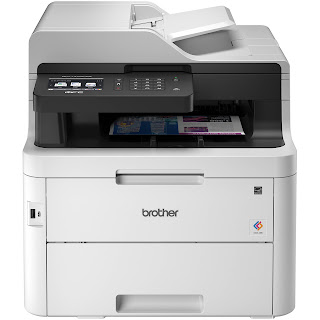How to fix if macbook wifi internet is not working?
How to Fix WiFi on Macbook
If
you're experiencing issues with your wireless connection on your MacBook, you
may be wondering how to fix wifi on your Macbook. While this problem can be a result
of a variety of hardware and software problems, there are some general steps
you can take to resolve the issue. This article outlines a few of the most
common issues and offers a solution for each. Once you've found the source of
your problem, the next step is to try to solve it.
To
fix the issue, first, restart your MacBook. Make sure to hold down the
Cmd-Option-P-R keys while you turn on the MacBook. This will reset the NVRAM
(PRAM) and will not affect your data. However, this may change some specific
system preferences. You can also try deleting the Bluetooth.plist file, which
is a temporary solution. This will solve any WiFi connectivity issues on your
MacBook.
If
this doesn't work, you can also try to repair the Wi-Fi connection on your Mac.
The first step to fix this problem is to restart your Mac. It is recommended
that you restart the computer if the Wi-Fi connection is not working properly.
If this doesn't work, you can always visit a Genius Bar to resolve the problem.
The service will be free of charge. If you still can't figure out how to fix
WiFi on your Macbook, you can follow the tips in this article.
Another
solution to fix your Wi-Fi problem on your Macbook is to unplug peripheral
accessories. If you have Bluetooth headphones or a USB flash drive, these might
interfere with your Internet connection. To resolve this issue, unplug them all
and reconnect them one at a time. If this doesn't work, you can contact the
manufacturer of those accessories. In case these solutions don't help, you can
always try rebooting the MacBook.
The
third option to fix WiFi on Macbook is to remove the DNS cache from your
system. The DNS cache is the digital equivalent of a phone book. This is a file
that stores information about your WiFi connection. It is usually located in
your system's settings and you can delete it to clear your internet connection.
If the DNS cache has been accidentally deleted, you can try restarting the
MacBook to fix the problem. Then, the problem may have been caused by the Wi-Fi
card being turned off.
Besides
removing unused extensions, you can also remove unnecessary files and bloatware
from your Mac. Rebooting your Mac may also fix this problem. It is a good idea
to restart your computer every so often because it might be the culprit for
your Wi-Fi connectivity problem. The restarting process will clear the cache
and enable the connection for your MacBook. When the problem persists, you may
have to reinstall your WiFi driver.
We're pleased to present the Mac Wi-Fi
Troubleshooting Guide that offers solutions for instances where WiFi isn't
working or your Mac isn't able to access the web, or your MacBook will not
connect to WiFi but other devices do or the signal strength for wireless is
low.
Reason for Macbook WiFi Issue:
There are three major reasons why Wi-Fi doesn't work it's because there's a problem with the router, your broadband provider's network is not working or you've encountered an issue with your Wi-Fi network. In rare cases, it could be a problem with the macOS software that you're running. This article covers all of the scenarios we've covered with this guide.
Steps To Fix Macbook WiFi:
There are a variety of methods to follow in
this article, but we've started with those that can hopefully resolve your
Wi-Fi issues quick, however, you might want to try some other suggestions in
case you aren't successful. These steps also work if
In this article, we discuss the following
suggestions for fixing Mac WiFi issues:
- Examine
for issues with the software
- Take a look at Wi-Fi
guidelines provided by macOS
- Find out whether the broadband
company is experiencing any problems
- Start
your router
- Start
your Mac
- Turn
off Bluetooth. Bluetooth off
- ' Forget'
your network and then connect
- Check that your router
is working properly Check its place
of operation and make sure that nothing interferes with the
signal. hindering
the connection
- Make use of the apple Wireless
Diagnostics
- Be aware of competitors on
other networks. modify
your name on the network, change
your Wi-Fi channel Consider employing
this 5GHz
frequency
- Make sure you are checking the settings of
your setting
for security
- Run Apple
Diagnostics
- Set to default your SMC PRAM,
NVRAM or SMC and alter your DNS settings
for your network
You can access an explanation of each step
by clicking the link above, or just go through the steps below in order.
We discuss issues with weak Wi-Fi signal in
a separate article: How to fix the MacBook Wi-Fi.

Comments
Post a Comment